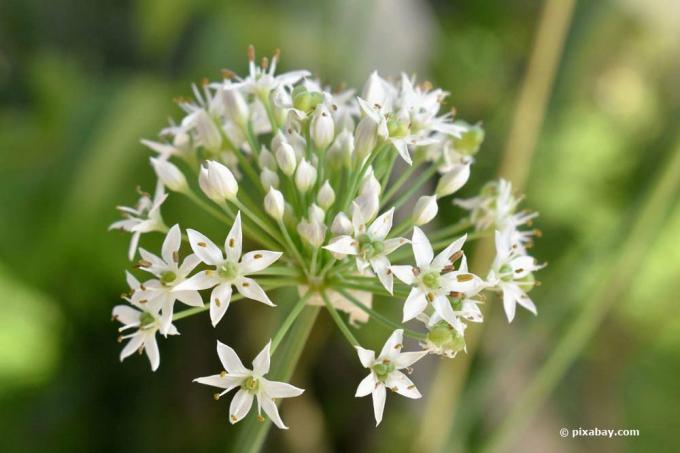
table of contents
- Planting time
- Winter garlic
- Spring garlic
- Crop rotation
- frequently asked Questions
Garlic is an ancient crop that has been grown for centuries. The planting time extends from spring to autumn. However, timing is important for a bountiful harvest.
In a nutshell
- Garlic can be planted in spring and / or fall
- Winter garlic develops larger cloves of garlic
- A change of location prevents pest infestation
Planting time
Garlic, bot. Allium sativum, can be planted in spring and / or autumn. Depending on the time of planting, the spring or Winter garlic spoken. The harvest time for spring garlic begins in August. You can harvest winter garlic from early summer. Regardless of when to plant, you shouldn't use garlic cloves from the supermarket for growing in your own garden. These usually come from mild regions, such as Egypt, Italy or France, and are not used to the cold temperatures of the Central European winter. Therefore, you should only grow garlic that has grown in this country.

Winter garlic
As the name "winter garlic" suggests, it stays in the ground over the winter. The winter garlic planting time falls in autumn. According to the calendar, the ideal planting time is between September / October and the beginning of November. The exact time, however, depends on the region and the weather conditions, because the toes should ideally only root at the onset of winter. That is why you should plant the winter garlic rather late.
Winter garlic has the advantage of producing larger toes than spring garlic. Because the cold during winter should have a positive effect on the growth of garlic (cold stimulus). However, the planting time in autumn is also associated with disadvantages, which can be attributed to the longer cultivation time of the garlic. This gives the garlic fly more time to damage the plants. Furthermore, you have to care for the bed longer. This includes, for example, weed control.
Tip: Winter protection is not absolutely necessary, but it is recommended to cover Allium sativum with a layer of mulch or brushwood in winter.
Spring garlic
For spring garlic, also called summer garlic, the planting time is between mid-February and mid-April. So that the plant develops many daughter bulbs, i.e. grows into a neat bulb of garlic, is the ideal Time to stick in February, which in the case of (not hardy) spring garlic in this country leads to problems with cold and frost can lead. Allium sativum later put into the ground, the roundling grows, but the spring garlic only occasionally forms daughter onions, which are usually very thin.

Tip: If the weather does not allow the garlic cloves to be planted, you can also prefer the plants in the pot. In this way you can compensate for the later planting time outdoors.
Crop rotation
Regardless of whether you plant Allium sativum in autumn or spring, you should pay attention to the crop rotation for a lush harvest. This means that the garlic needs to be relocated year after year. This will prevent pests that specialize in garlic plants and other allium species from spreading. A break from cultivation at the same location of four to five years is ideal.
The change of location also results from the crop rotation of other vegetables, which are called good neighbors of garlic. These include, for example:
- Strawberries
- Cucumber
- Carrots
- Beetroot
- tomatoes
Tip: If you place garlic plants between strawberries, it is also a preventive measure against fungal and mold infestation of the strawberry plants.

frequently asked Questions
Garlic cloves can be pinned from spring to autumn. For a good harvest, however, you should plant Allium sativum in spring and / or autumn.
There is no difference in taste between the two planting times. However, Allium sativum, which was planted in autumn, will develop larger toes.
To prevent pests that specialize in garlic plants from spreading, you should only put the garlic cloves back in the same location after four to five years.



